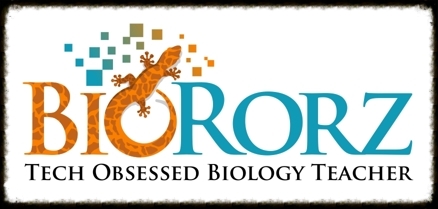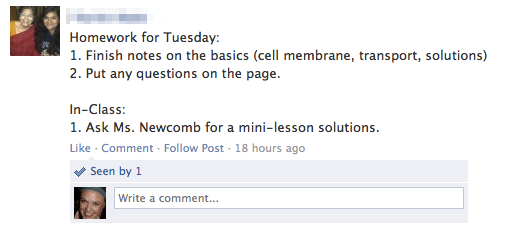Maximize Student Engagement with Voice and Choice
The assignment: Figure out how a cell maintains an internal environment separate from its external environment by researching any function of the human body that interests you as a group. Tell your story as if you were standing on the cell membrane watching your function in action.
- You choose your groups and make a group contract.
- You set your class and homework schedule over the next four weeks.
- You maintain a communication platform that I can monitor.
- You decide how you will communicate your learning of the requisite learning objectives and individual research question to the class.
- You decide how you should be assessed on your learning and presentation.
- YOU ARE IN CONTROL OF YOUR OWN LEARNING!
Of course there is more to it, but you get the idea. Here is the link to the project details. The assignment was made only five hours ago, and this is why PBL is AWESOME!
This group chose to use Trello to plan their project. Notice that one of the three has already completed his assignment for the day. There has been quite a bit of chatter on their facebook group as well.
I just love watching students take control of their own learning! This year, several of my students have decided to use Trello as a platform for organizing their project and communicating their progress. The fact that there is a mobile app for Trello makes it even better. Looking forward to getting feedback on this tool!
I also love how organic the process is. They set a task to learn information and then "book me" for mini lessons to help with their understanding. Today I spent 5 minutes going over the basic structure of the cell membrane at their request. Three of the four groups in one class joined in on the mini lesson and then I sent them off to explore the concepts further. At the end of class, one group asked for a fifteen minute mini lesson on cell transport in the next class to help synthesize their self-assigned homework over learning about this topic. Another plans to meet with me as well. Thanks Facebook for the heads up!
The engagement is fantastic, and the best part... I can't wait to learn with my kids!
How do you actually lose weight? What causes cocaine addiction? How does Parkinson's disease affect the body? What happens when you starve? What causes depression? What's the deal with lactose intolerance? Why are French fries so bad for you? How does an asthma inhaler work? ... and the list goes on. Stay tuned for updates on our project.














